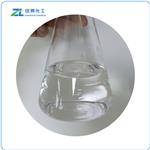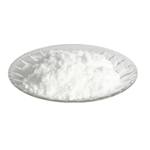- STANNOUS CHLORIDE
-

- $58.00/ kg
-
2024-11-01
- CAS:7772-99-8
- Min. Order: 1kg
- Purity: 99%
- Supply Ability: 5000kg/week
- STANNOUS CHLORIDE
-

- $1.50 / 1kg
-
2024-10-24
- CAS:7772-99-8
- Min. Order: 20kg
- Purity: 99%
- Supply Ability: 300tons
- STANNOUS CHLORIDE
-

- $5.60 / 1KG
-
2024-10-11
- CAS:7772-99-8
- Min. Order: 1KG
- Purity: 99%
- Supply Ability: 5000kg
|
| | Stannous chloride Basic information |
| | Stannous chloride Chemical Properties |
| Melting point | 246 °C(lit.) | | Boiling point | 652 °C(lit.) | | density | 3.95 | | vapor pressure | 0Pa at 20℃ | | Fp | 652°C | | storage temp. | Store below +30°C. | | solubility | H2O: soluble | | form | powder | | Specific Gravity | 3.95 | | color | White | | PH | 2.0 (100g/l, H2O, 20℃) | | Water Solubility | Soluble in water, alkalies, alcohol, methyl ethyl ketone, methyl acetate and acetone. | | Sensitive | Air Sensitive & Hygroscopic | | Crystal Structure | PbCl2 type | | crystal system | Nogata | | Merck | 14,8783 | | Space group | Pnma | | Lattice constant | | a/nm | b/nm | c/nm | α/o | β/o | γ/o | V/nm3 | | 0.779 | 0.443 | 0.921 | 90 | 90 | 90 | 0.318 |
| | Exposure limits | ACGIH: TWA 2 mg/m3
NIOSH: IDLH 100 mg/m3; TWA 2 mg/m3 | | Stability: | Stable, but moisture sensitive. Incompatible with strong bases, strong oxidizing agents, reactive metals, hydrogen peroxide, water. | | InChIKey | AXZWODMDQAVCJE-UHFFFAOYSA-L | | LogP | -2.15 at 20℃ | | CAS DataBase Reference | 7772-99-8(CAS DataBase Reference) | | EPA Substance Registry System | Tin dichloride (7772-99-8) |
| | Stannous chloride Usage And Synthesis |
| Chemical Properties | Stannous chloride is a white crystalline solid. | | Chemical Properties | Also known as tin chloride, tin crystals, tin dichloride and tin salts, SnCl2 is white crystals, soluble in water, alcohol, and alkalies, oxidized in air to the oxychloride, that melt at 247°C. Used as a chemical intermediate, reducing agent, and ink-stain remover, and for silvering mirrors. | | Physical properties | White orthogonal crystal; density 3.90 g/cm3; melts at 247°C; vaporizes at 623°C; vapor pressure 1 torr at 316°C, 5 torr at 366°C and 20 torr at 420°C; soluble in water, ethanol, acetone and ether; insoluble in xylene and mineral spirits.
TIN(II) CHLORIDE 937The dihydrate, SnCl2•2H2O, is a white monoclinic crystalline substance; density 2.71 g/cm3; absorbs oxygen from air forming an oxychloride; melts at 37°C on rapid heating; decomposes on strong heating; very soluble in water; forms an insoluble basic salt with excess water; very soluble in hydrochloric acid; soluble in caustic soda solution, ethanol and ethyl acetate. | | Uses | Synthesis of tin(IV) octaethylcorroles was accomplished with this reagent. These new compounds exhibit reversible oxidation only at the conjugated ring system, not at the metal center.1 | | Uses | Stannous Chloride is an antioxidant and preservative that exists as
white or colorless crystals, being very soluble in water. it reacts read-
ily with oxygen, preventing its combination with chemicals and
foods which would otherwise result in discoloration and undesirable
odors. it is used for color retention in asparagus at less than 20 ppm.
it is also used in carbonated drinks. | | Uses | Tin (II) chloride is a strong reducing agent and is used in many industrial processes, such as manufacturing dyes, phosphors, and polymers. The compound is a major ingredient in acid tin plating baths. Other uses are a mordant in dyeing; an additive to lubricating oil to prevent sludging; a stablizier for perfume in soaps; in removing ink stains; a sensitizing agent for glass, paper, and plastics; and a soldering flux. Tin(II) chloride is used for preparing a number of tin(II) salts. It is a catalyst in many organic reactions. It is a common laboratory reagent. | | Preparation | Tin(II) chloride is prepared by dissolving tin in hydrochloric acid followed by evaporation of the solution and crystallization. | | Definition | ChEBI: An inorganic chloride that has formula Cl2Sn. | | General Description | Crystalline mass or flaky solid with a fatty appearance. Density 3.95 g / cm3. Melting point 247°C. Burns, but may be difficult to ignite. Toxic by ingestion. Irritates skin and eyes. Used in the manufacture of dyes, pharmaceuticals and as a tanning agent. | | Air & Water Reactions | Water soluble. | | Reactivity Profile | STANNOUS CHLORIDE is a powerful reducing agent. Can react violently with oxidizing agents. Undergoes flaming reaction with bromine trifluoride [Mellor 2 Supp. 1:164 1956]. Catalyzes the exothermic rearrangement and polymerization of ethylene oxide [J. Soc. Chem. Ind. 68:179 1949]. Mixtures with calcium carbide can be ignited with a match, and the reaction proceeds with incandescence [Mellor 7:430 1946-47]. Reacts with hydrazine hydrate to give stannous dihydrazine chloride which decomposes explosively when heated [Mellor 7:430 1946-47]. Undergoes a strongly exothermic reaction with aqueous solutions of hydrogen peroxide having concentration exceeding 3%) [Chem. & Ind., 1949, 657]. | | Hazard | Irritant to skin, use in foods restricted to
0.0015%, as tin. | | Health Hazard | TOXIC; inhalation, ingestion or skin contact with material may cause severe injury or death. Contact with molten substance may cause severe burns to skin and eyes. Avoid any skin contact. Effects of contact or inhalation may be delayed. Fire may produce irritating, corrosive and/or toxic gases. Runoff from fire control or dilution water may be corrosive and/or toxic and cause pollution. | | Fire Hazard | Non-combustible, substance itself does not burn but may decompose upon heating to produce corrosive and/or toxic fumes. Some are oxidizers and may ignite combustibles (wood, paper, oil, clothing, etc.). Contact with metals may evolve flammable hydrogen gas. Containers may explode when heated. | | Safety Profile | Poison by ingestion,
intraperitoneal, intravenous, and
subcutaneous routes. Experimental
reproductive effects. Human mutation data
reported. Potentially explosive reaction with
metal nitrates. Violent reactions with
hydrogen peroxide, ethylene oxide,
hydrazine hydrate, nitrates, K, Na. Ignition
on contact with bromine trifluoride. A
vigorous reaction with calcium acetylide is
initiated by flame. When heated to
decomposition it emits toxic fumes of Cl-.
See also TIN COMPOUNDS. | | Potential Exposure | Stannous chloride is used as a dye, pigment, and printing ink; in making chemicals; chemical preservatives; food additives; polymers, textiles, glass, silvering mirrors. | | Shipping | UN3260 Corrosive solid, acidic, inorganic, n.o.s., Hazard class: 8; Labels: 8-Corrosive material, Technical Name Required. | | Purification Methods | Analytical reagent grade stannous chloride dihydrate is dehydrated by adding it slowly to vigorously stirred, redistilled acetic anhydride (120g salt per 100g of anhydride) in a fume cupboard. After ca an hour, the anhydrous SnCl2 is filtered on to a sintered-glass or Büchner funnel, washed free from acetic acid with dry Et2O (2 x 30mL), and dried under vacuum. It is stored in a sealed container. [Stephen J Chem Soc 2786 1930, Williams Org Synth Coll Vol III 627 1955.] | | Incompatibilities | A strong reducing agent. Reacts violently with oxidants. Reacts violently with bromine trifluoride; potassium, hydrazine hydrate, sodium, sodium peroxide; ethylene oxide; and nitrates. Keep away from moisture, sources of oxygen, and combustible materials. |
| | Stannous chloride Preparation Products And Raw materials |
| Raw materials | Hydrochloric acid-->Chlorine-->Tin | | Preparation Products | Rhodamine 6G-->2-CHLORO-5-FLUOROISONICOTINIC ACID-->4-Aminobenzotrifluoride-->4-(4-AMINOPHENYL)MORPHOLIN-3-ONE-->PYRIDAZINE-3,4-DIAMINE-->Dimidium bromide-->2-Aminoquinoline-->5-BROMO-2-BENZOXAZOLINONE 97-->2-Amino-4-bromophenol-->H-GLY-AMC HBR-->4-Aminobenzamidine dihydrochloride-->3-Amino-6-chloropyridine-2-carboxylic acid-->5-AMINO-2-CHLORO-NICOTINIC ACID-->2-[3-(2-FURYL)PHENYL]-4,4,5,5-TETRAMETHYL-1,3,2-DIOXABOROLANE-->3,6-DICHLORO-4-HYDROXYPYRIDINE-2-CARBOXYLIC ACID-->2,3-DIAMINO-6-CHLOROPYRIDINE-->3-AMINO-6-CHLORO-4-PICOLINE-->5-Amino-2,3-dichloropyridine-->7-Hydroxygranisetron-->Bathophenanthroline-->3-HYDRAZINOPYRIDINE Dihydrochloride-->Stannous octoate-->Stannous sulfate-->5-AMINO-4,6-DIHYDROXYPYRIMIDINE-->Oxibendazole-->5-AMINO-1-(4-CHLOROPHENYL)-1H-PYRAZOLE-4-CARBONITRILE-->Disodium stannous citrate-->5-ACETYLAMINO-2-CHLORO-4-PICOLINE |
|